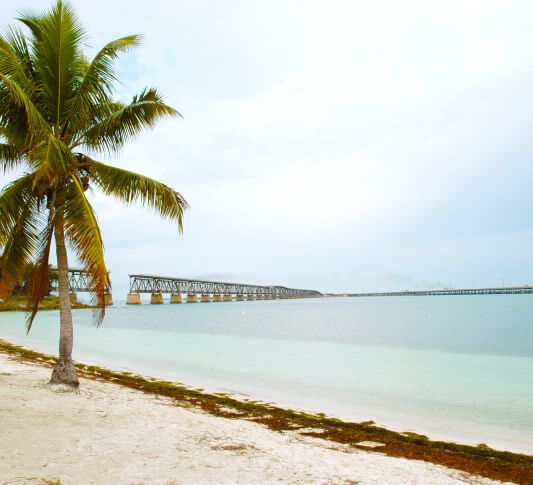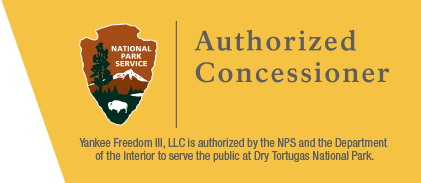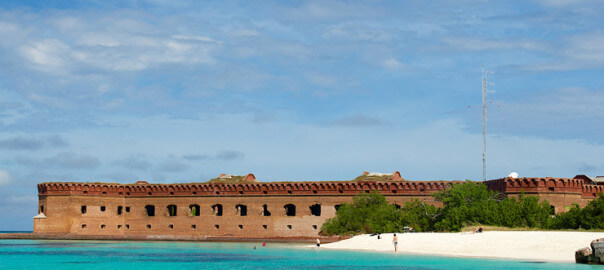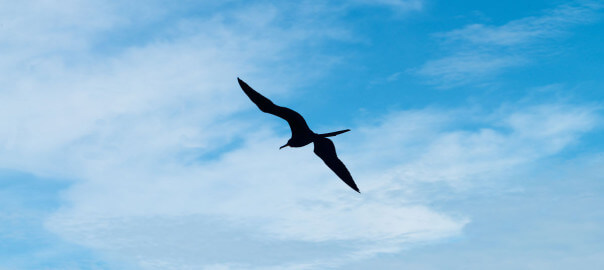Florida State Parks

T.H. Stone Memorial St. Joseph Peninsula State Park
With miles of white sugar sand, this park has one of the top rated beaches in the United States. Sunbathing, snorkeling, and swimming are popular activities along the Gulf of Mexico and St. Joseph Bay. From offshore, canoeists and kayakers can take in a superb view of the high dunes and sand pine scrub. Outdoor enthusiasts can enjoy camping, fishing, hiking, and bicycling. As a coastal barrier peninsula, St. Joseph provides excellent opportunities for bird watching; over 240 species have been sighted in the park. A boat ramp is located at Eagle Harbor on the bay side. Campers can stay in a full-facility campground, a short walk from the beach, or at primitive campsites in the wilderness preserve. Eight cabins on the bay side offer alternative overnight accommodations. For Information about T.H. Stone Memorial St. Joseph Peninsula State Park, please call 850/227-1327.
Tarkiln Bayou Preserve State Park
The preserve is home to four species of endangered pitcher plants, as well as other rare and endangered plant species. The rare, carnivorous white–top pitcher plant is unique to the Gulf Coast and found only between the Apalachicola and Mississippi rivers. Almost 100 other rare plants and animals depend on the wet prairie habitat, including the alligator snapping turtle, sweet pitcher plant, and Chapman´s butterwort. A boardwalk offers visitors a view of the wild and beautiful Tarkiln Bayou. Visitors can enjoy a picnic and then take a hike on the nature trails to observe the rare plants and animals. For a more adventurous outing, visitors can take a day–hike across the park to the Perdido River. Located in Escambia County about 1.5 miles south of the intersection of U.S. 98 and State Road 293. For Information about Tarkiln Bayou Preserve State Park, please call (850) 492–1595.
Three Rivers State Park
Where Florida meets the southwest corner of Georgia, the Chattahoochee and Flint rivers converge to form Lake Seminole, the setting for this peaceful park. Hiking through forested hills of pine and mixed hardwoods, visitors might catch sight of fox squirrels, white-tailed deer, gray foxes, or many species of native and migratory birds. Anglers can launch from a boat ramp to enjoy some of the best freshwater fishing in the state, or fish from a 100-foot pier in the camping area. A shady picnic area, with tables and grills, overlooks the lake. For large gatherings, a picnic pavilion that seats up to 60 people is available for rental. Overnight visitors can stay in a full-facility campground next to the lake or enjoy the comforts of a modern cabin. Located two miles north of Sneads on State Road 271 (River Road). For Information about Three Rivers State Park, please call 850-482-9006.
Topsail Hill Preserve State Park
This park offers a wide variety of natural resources including 3.2 miles of secluded, white sand beaches with majestic dunes over 25 feet tall. Three rare coastal dune lakes provide excellent freshwater fishing. Although boats are not allowed, fishing from the shoreline yields bass, bream, panfish, and catfish. Lakes, pristine beaches, old-growth long leaf pines, sand pine scrub, and a variety of wetlands offer a bird-watching and hiking paradise. Visitors may bike, walk, or enjoy a quick ride to the beach on our timely tram service to swim, fish, sunbathe, or beachcomb. A full-facility campground features a swimming pool, tennis courts, and shuffleboard courts. Furnished bungalows are available for weekly stays. A camp store offers a variety of camping items, as well as snacks and drinks. Located in Santa Rosa Beach on Route 30A, one mile off U.S. 98.
For Information about Topsail Hill Preserve State Park, please call 850-267-0299.
Torreya State Park
High bluffs overlooking the Apalachicola River make Torreya one of Florida’s most scenic places. The park is named for an extremely rare species of Torreya tree that only grows on the bluffs along the Apalachicola River. Developed by the Civilian Conservation Corps in the 1930s, Torreya is popular for camping, hiking, and picnicking. Bird-watching is also a popular activity. Over 100 species of birds have been spotted in the park. Forests of hardwood trees provide the finest display of fall color found in Florida. The main campground offers full-facility campsites and a YURT (Year-round Universal Recreational Tent). Primitive campsites and a youth campground are also available. Ranger-guided tours of the Gregory House, a fully furnished plantation home built in 1849, are given at 10:00 a.m. on weekdays and 10:00 a.m., 2:00 p.m., and 4:00 p.m. on weekends and state holidays. Located west on County Road 1641 off State Road 12, 13 miles north of Bristol. For Information about Torreya State Park, please call 850-643-2674.
Yellow River Marsh Preserve State Park
This preserve protects one of Florida’s last remaining tracts of wet prairie, including the largest community of pitcher plants in the state. The carnivorous plants flourish here, passively trapping insects in specialized tube-shaped leaves and absorbing nutrients from their decomposing prey. The preserve is located in Santa Rosa County on Garcon Point, which separates Escambia Bay from Blackwater Bay. Nearly 20 rare and endangered species of plants and animals make their homes along the bay and its wet prairies, dome swamps, and flatwoods. There are no recreational facilities in the preserve, but the sweeping landscapes of the pitcher plant prairies offer a tremendous opportunity for photography and nature appreciation. A small parking area, gazebo, and public access point are located on Dickerson City Road. Located on County Road 191, approximately one mile north of the intersection with County Road 281 and along both sides of the highway on Blackwater Bay. For Information about Yellow River Marsh Preserve State Park, please call 850-983-5363.
KEY WEST STATE PARKS
Bahia Honda State Park
Henry Flagler’s railroad to Key West turned the remote island of Bahia Honda Key into a tropical destination. Today, the island is home to one of Florida’s southernmost state parks, known for beautiful beaches, magnificent sunsets, and excellent snorkeling. Visitors can picnic on the beach and take a swim, or simply relax and enjoy the balmy sea breezes that caress the shores year-round. Anglers can fish from shore or bring a boat and launch at the boat ramp. The park’s concession rents kayaks and snorkeling gear and offers boat trips to the reef for snorkeling excursions. Bahia Honda is an excellent place to see wading birds and shorebirds. The nature center can introduce nature lovers to the island’s unique plants and animals. Full-facility campsites and vacation cabins are available. Located 12 miles south of Marathon.
PANHANDLE
Curry Hammock State Park
This park is made up of a group of islands in the Middle Keys, with public access to swimming, a playground, picnic tables, grills, and showers on the ocean side of Little Crawl Key. The hardwood hammocks found on these tropical islands support one of the largest populations of thatch palms in the United States. Mangrove swamps, seagrass beds, and wetlands provide vital habitats for tropical wildlife.
Dagny Johnson Key Largo Hammock Botanical State Park
Once slated to become a condominium development, this park contains one of the largest tracts of West Indian tropical hardwood hammock in the United States. The park is home to 84 protected species of plants and animals, including wild cotton, mahogany mistletoe, and the American crocodile. Exploring the park´s trails gives visitors a chance to see some of these rare species of plants and animals. Over six miles of nature trails provide a wealth of opportunities for birdwatchers and photographers. Most of the park´s trails are paved and accessible to both bicycles and wheelchairs. Signs along a self-guided nature trail provide information about the park´s ecosystem and wildlife; ranger-guided tours are also available. Located on County Road 905, one-quarter mile north of its intersection with Overseas Highway (U.S. 1).
Fort Zachary Taylor Historic State Park
Designated a National Historic Landmark in 1973, Florida’s southernmost state park is popular for recreation, as well as U.S. military history. The fort was one of a series built in the mid-1800s to defend the nation’s southeastern coastline. Completed in 1866, Fort Zachary Taylor played important roles in the Civil War and Spanish-American War. A beautiful beach at the southern end of the park provides opportunities for picnicking, swimming, snorkeling, and fishing. Visitors can also enjoy a short nature trail and bicycling within the park. A refreshment stand at the beach offers snacks, cold beverages, beach sundries, and souvenirs. Guided tours of the fort are available daily. Located in Key West at the end of Southard Street on Truman Annex.
Pages: 1 2 3 4 5 6 7 8 9 10 11 12 13 14 15 16



